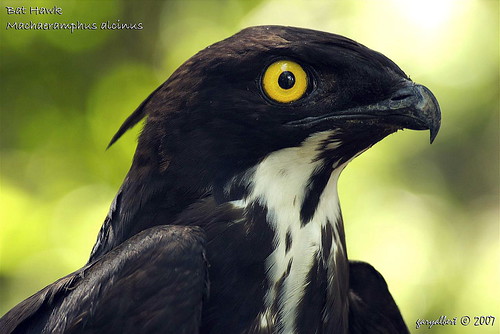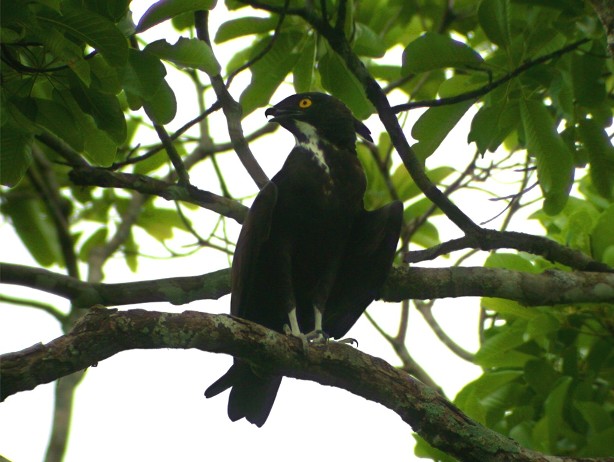Introduction collection fauna at Kerinci Seblat National Park
Burung elang kelelawar
This is rare bird also present in Kerinci Seblat National Park. In bahasa call as Burung elang kelelawar.


Taxonomy
| Kingdom: | ANIMALIA |
| Phylum: | CHORDATA |
| Class: | AVES |
| Order: | FALCONIFORMES |
| Family: | ACCIPITRIDAE |
| Common Name/s: | BAT HAWK (Eng) |
| Species Authority: | Westermann, 1851 |
Assessment Information
| Red List Category & Criteria: | LC ver 2.3 (1994) | |||||||||
| Year Assessed: | 2004 | |||||||||
| Assessor/s: | BirdLife International | |||||||||
| Evaluator/s: | Ekstrom, J. & Butchart, S. (BirdLife International Red List Authority) | |||||||||
| Justification: | This species has a large range, with an estimated global extent of occurrence of 10,000,000 km². It has a large global population estimated to be 10,000–100,000 individuals (Ferguson-Lees et al. 2001). Global population trends have not been quantified, but populations appear to be stable (Ferguson-Lees et al. 2001) so the species is not believed to approach the thresholds for the population decline criterion of the IUCN Red List (i.e., declining more than 30% in ten years or three generations). For these reasons, the species is evaluated as Least Concern. | |||||||||
| History: |
|
Distribution
| Country Names: | Native: Angola; Benin; Botswana; Brunei Darussalam; Burkina Faso; Burundi; Cameroon; Central African Republic; Chad; Comoros; Congo; Congo, The Democratic Republic of the; Côte d'Ivoire; Equatorial Guinea; Ethiopia; Gabon; Ghana; Guinea; Indonesia; Kenya; Liberia; Madagascar; Malawi; Malaysia; Mali; Mozambique; Myanmar; Namibia; Niger; Nigeria; Papua New Guinea; Rwanda; Senegal; Sierra Leone; Somalia; South Africa; Sudan; Tanzania, United Republic of; Thailand; Togo; Uganda; Zambia; Zimbabwe Vagrant: Gambia; Sao Tomé and Principe; Singapore |
Summary Documentation
| System: | Terrestrial; Freshwater; Marine |
Detailed Documentation
| Range: | This species has a large range, with an estimated global Extent of Occurrence of 10,000,000 km. It has a large global population estimated to be 10,000-100,000 individuals1. Global population trends have not been quantified, but overall populations appear to be stable1, despite evidence of a decline in Borneo2, so the species is not believed to approach the thresholds for the population decline criterion of the IUCN Red List (i.e. declining more than 30% in ten years or three generations). For these reasons, the species is evaluated as Least Concern. |
http://www5b.biglobe.ne.jp/~raptor/DSCN6776.jpg
http://www.blogger.com/post-create.g?blogID=3965716643092325629
http://www.iucnredlist.org/search/details.php/49317/all
http://www.flickr.com/photos/8225770@N06/540186392/in/photostream/














0 comments:
Post a Comment